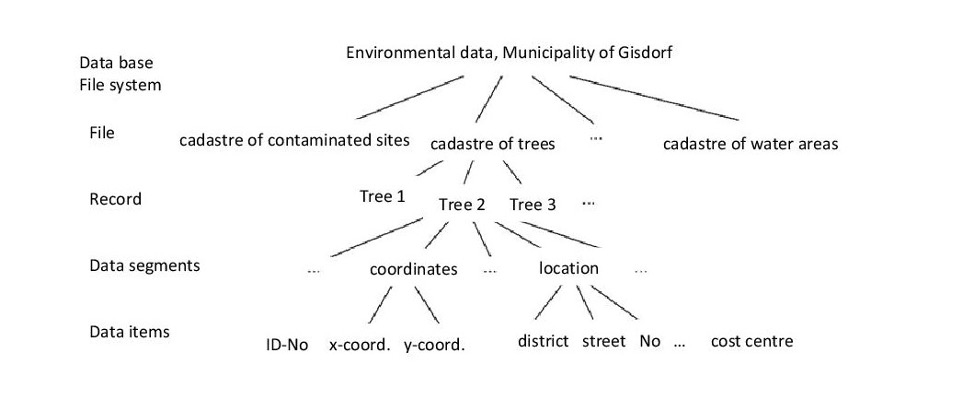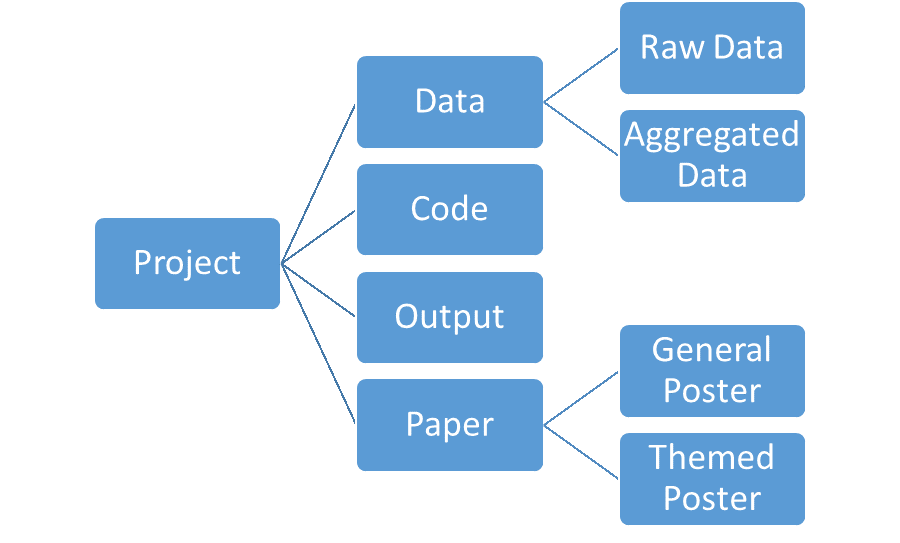7.7 Databases and database systems
Suitable conventions for naming and storing files are already an important building block for efficient data organisation. However, if you work with a particularly large number of files or have special requirements for the structuring of your data, especially with regard to searchability, the use of database systems can be helpful. Here, not only are the files themselves sensibly structured, but they are also recorded in a database and provided with metadata (see Chapter 4). The metadata enable targeted filter and search functions. For example, an image database could quickly and conveniently display all images taken by a certain agency at a certain place at a certain time. Figure 7.4 illustrates the basic concepts of data organisation and their hierarchical relationship.

Fig. 7.4: Basic concepts of data organisation (De Lange 2006: 328).
At the lowest level of data organisation are data fields. These contain attribute values according to which they can be logically assigned to data segments (data groups). Several data segments build up a data record. Logically related data sets then form a file, while related files form file systems or databases.
However, databases are not sufficient for organising data for many user requirements; for example, some data must be stored several times in different locations in order to be able to use it for different applications. In addition, data protection can only be guaranteed with difficulty by assigning access rights. Therefore, database systems are needed.
“A database system (DBS) consists of the database administration system or database management system (DBMS) and several databases (DB, also databases)” (De Lange 2006: 332). But what are databases and database management systems? A database consists of “multiple, interlinked data” (Herrmann 2018: 5), making it a collection of data whose data “are logically related” (Herrmann 2018: 5). The database is managed by the database management system; the latter is therefore software.
Thus, database systems offer users efficient and bundled access to data and should fulfil the following requirements (De Lange 2006: 333):
- Evaluability of the data according to any characteristics
- Simple query options and evaluation, fast provision of data
- Allocation of different usage rights to the individual users
- Data and user programs are independent of each other, so the user only needs to know the logical data structures, while the DBS takes care of the organisational management
- No data duplication and data integrity
- Data security in the event of hardware failures and user programme errors
- Data protection against unauthorised access
- Flexibility with regard to new requirements
- Allowing multi-user access
- Compliance with uniform standards
The most common database management systems include Oracle, MySQL, Microsoft Access and SAP HANA.





